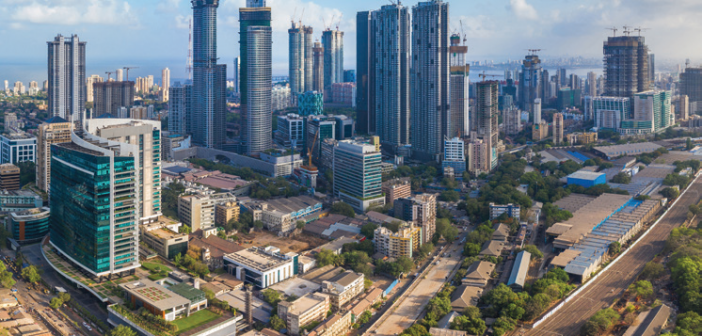By S. Suchithra
Mumbai, the “City of Dreams,” has always been synonymous with soaring ambitions and even higher property prices. In recent times, the city’s real estate market has witnessed a remarkable resurgence, shattering records and defying economic uncertainties. This analysis delves into the current state of Mumbai’s property market, exploring the driving forces behind the boom, potential challenges, and emerging trends.
Record-Breaking Sales and Revenue Surge
The year 2023 proved to be a banner year for Mumbai’s real estate sector. Data from the Inspector General of Registration, Maharashtra, reveals a staggering 1.27 lakh property registrations, exceeding the previous year’s peak by a significant 4%. This translates to a record-breaking revenue collection of over Rs 10,850 crore through stamp duty, a staggering 22% increase compared to 2022. The first few months of 2024 have continued this positive trend, with reports indicating a 21% year-on-year increase in property registrations in January and February, further bolstering investor confidence.
Factors Fueling the Boom
Several factors are contributing to the current boom in Mumbai’s real estate market:
- Pent-up Demand: The COVID-19 pandemic led to a slowdown in the market, with many potential buyers adopting a wait-and-watch approach. As the pandemic subsided, this pent-up demand has been unleashed, fueling a surge in transactions.
- Low-Interest Rates: The Reserve Bank of India’s accommodative monetary policy, with historically low interest rates on home loans, has made property purchases more attractive and affordable for many buyers.
- Economic Optimism: A recovering Indian economy, coupled with a bullish stock market, has instilled a sense of optimism among investors, leading them to seek alternative investment avenues like real estate.
- Increased Infrastructure Development: The ongoing infrastructure projects in and around Mumbai, including the development of new metro lines and improved connectivity, are enhancing the attractiveness of specific localities, driving up property prices in those areas.
- Shifting Preferences: The pandemic has triggered a change in homebuyer preferences. There’s a growing demand for smaller, more functional apartments, with balconies and amenities that cater to a work-from-home lifestyle.
Challenges and Considerations
Despite the positive outlook, there are some challenges that could potentially impact the market:
- Affordability: Despite the record-breaking sales, Mumbai remains one of the most expensive real estate markets in India. Rising property prices could price out many middle-income buyers, hindering long-term market sustainability.
- Limited Land Availability: Mumbai is a densely populated city with limited land availability. This scarcity is a major factor contributing to the high cost of real estate.
- Rising Construction Costs: The rising cost of raw materials and labor for construction can lead to further increases in property prices, further squeezing affordability.
- Interest Rate Fluctuations: Any future rise in interest rates by the RBI could dampen buyer sentiment and impact market momentum.
Emerging Trends and the Road Ahead
The Mumbai real estate market is constantly evolving, and several trends are shaping its future:
- Focus on Redevelopment: With limited land availability, redevelopment of old and dilapidated buildings is becoming a major driver of the market. This allows for the creation of modern, high-rise structures with improved amenities.
- Rise of Co-living Spaces: Catering to the growing young professional population, co-living spaces with shared amenities are gaining traction, offering a more affordable alternative to traditional rentals.
- Technological Integration: PropTech (property technology) is playing an increasingly important role, with online platforms facilitating property searches, virtual tours, and smoother transactions.
Conclusion
Mumbai’s real estate market is currently experiencing a period of robust growth, driven by pent-up demand, low interest rates, and economic optimism. However, affordability concerns, limited land availability, and potential interest rate hikes remain challenges to be addressed. By focusing on redevelopment, embracing new investment models like co-living spaces, and integrating technology for a more efficient market, Mumbai’s real estate sector can navigate these challenges and sustain its upward trajectory. The future of Mumbai’s property market hinges on its ability to create a balance between growth and affordability, ensuring that the “City of Dreams” remains accessible to all.





